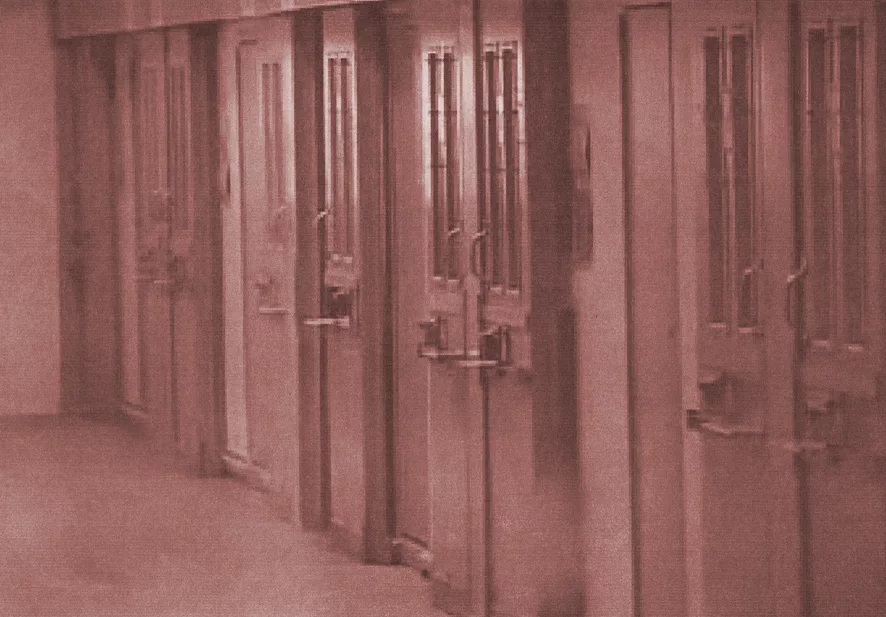The Two Months I Didn’t Eat: Inside the Longest Prison Hunger Strike in California History
Ten years ago this month, nearly 29,000 people in California prisons staged a hunger strike to protest solitary confinement.

This essay was published in partnership with Prison Journalism Project, which publishes independent journalism by incarcerated writers and others impacted by incarceration. Sign up for The Prison Journalism Project’s newsletter, or follow them on Instagram or Twitter.
It was all rumors, until the day arrived.
“Homie, you ready?” my cellie asked.
“Yeah,” I responded.
“People are going to die for this cause,” he said.
It was early July 2013, the first day of a massive hunger strike organized to protest inhumane prolonged solitary confinement conditions in California prisons. Nearly 29,000 people across two-thirds of the state’s prisons, as well as four private out-of-state prisons that held incarcerated Californians, were about to stop eating the food that staff members served to them.
The strike’s four organizers had managed to coordinate the action from inside their cells in solitary confinement, or the Short Corridor of the Security Housing Unit, at Pelican Bay Prison, a supermax facility close to the Oregon border.
Incarcerated people were protesting the fact that some prisoners had seen indeterminate sentences in the hole stretch into decades—one of the strike’s organizers spent more than 20 years in solitary.
On that day, when chow time came at Calipatria State Prison in southeast California, prison staff delivered the meals to our cells. The food tray slot opened on our door.
“Here,” a corrections officer said as he handed over a tray of food.
“I’m good,” I replied, intent on standing in solidarity with other strikers against the injustices and inhuman treatment we were receiving. I couldn’t help but notice the meal of sunny-side-up eggs, toast, a well-done sausage, crispy hash browns, cereal, milk, juice, and a fresh banana.
“Damn,” I told my cellie. “They never feed us this good.”
“This is when the mind games begin,” he responded.
I took a deep breath and felt my nostrils opening up from the appetizing aroma. I let out a loud sigh. It was only 30 minutes in and I was already getting irritated.
On the third day of the strike, prison staff came into our cell and confiscated all the food we’d purchased from commissary, so I started guzzling water. To distract myself from the pain, I slept 15 hours a day.
After the 10th day, medical staff began checking our vitals. On the 16th day, a striker split a peanut butter pack with myself and others. The small bite of food made my stomach cramp. I wanted more, but the pain was excruciating.
On the 26th day, medical staff gave us drinks with electrolytes to prevent dehydration.
After about a month of starving my body, I was walking to the restroom when suddenly my vision got dim and I began to see bright spots.
“What the—,” I whispered, staggering backward. I was getting dizzy.
I felt a sharp pain in my stomach and a burning sensation. My eyes watered. I let out a loud burp and began to grunt. Nothing came out but gas, until I vomited a translucent yellow liquid.
I remember being on the toilet and asking myself, “Am I dying?”
Those words that my cellie had said—“People are going to die for this cause”—came to mind. I crawled to the wall and just stood there, questioning why I was doing this to myself.
On day 39, the nurse checked our vital signs. She noticed how fragile I looked and requested a wheelchair for me to be escorted to medical. When I arrived, I overheard the nurse telling the doctor, “His vital signs are low and he needs to be hospitalized.”
The doctor asked me how I was feeling.
I gave a thumbs-up and managed a devastated smile.
“Call an ambulance,” he said.
The corrections officers handed me an orange jumpsuit, only worn when you’re transferred out of the prison. Medical staff put me on a gurney and into the ambulance.
An hour later, we arrived at the local hospital. I was handcuffed to the gurney while two corrections officers with shotguns escorted me in. I waited in the reception room, head tilted back with my eyes shut.
As soon as I opened my eyes, I noticed a little boy pointing at me and speaking to his mother. I saw fear in her eyes as she sheltered him from me. In that moment, I put my head down from shame and guilt. I felt worthless.
After 24 hours in the hospital I was ordered back to prison. On day 60, the hunger strike officially ended when California lawmakers promised to hold legislative hearings about the use of solitary confinement.
This was the longest prison hunger strike in California’s history—and, as my cellie had predicted, it was as brutal as it was influential. One person died while striking, a death California officials ruled a suicide. By the final week, roughly 100 people were still participating. About 10 people were collapsing or requiring medical care each day, according to the Los Angeles Times.
Slowly but surely, people were released from solitary confinement. Immediately after, I felt like our living conditions improved. But more than anything, our protest showed how the power of unity was able to change an inflexible mindset.
Additional reporting by PJP.
